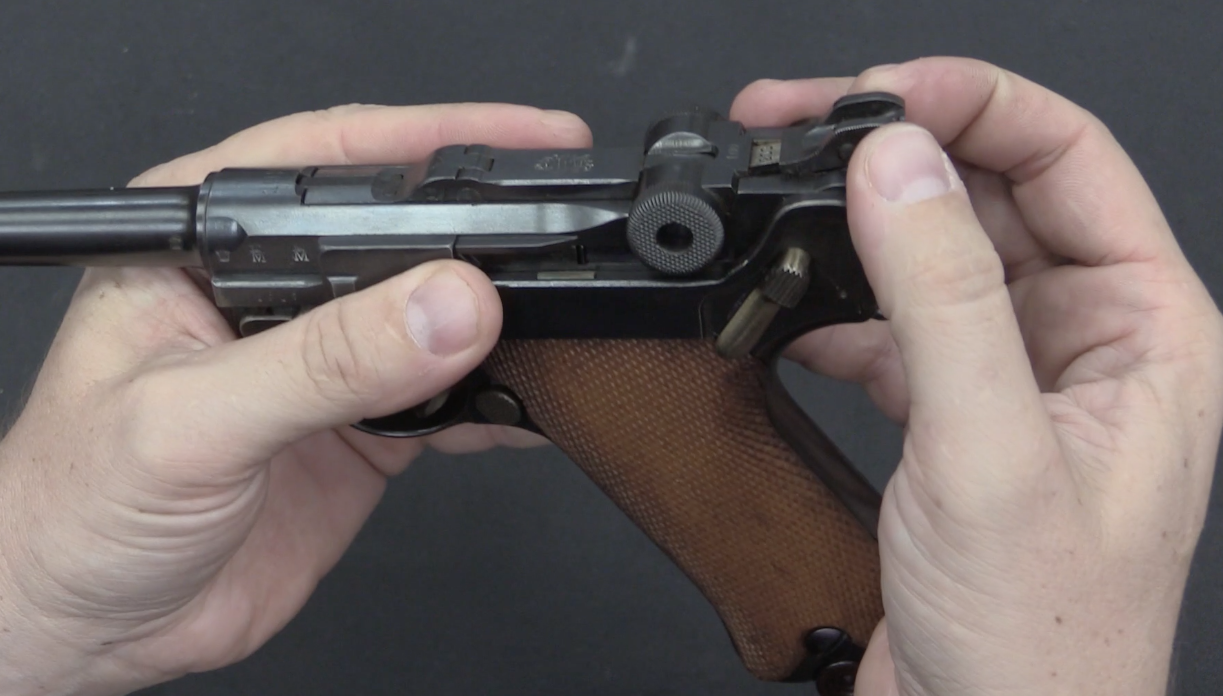The Kar88 in this video is coming up for auction here, and the Gewehr 91 here.
With the development of the smokeless Gewehr 88 “Commission Rifle”, the German Army finally made a serious effort to bring their cavalry units up to a modern standard. There had never been a carbine variant of the Mauser 71/84 produced, and even by the late 1880s many German cavalrymen were still carrying single shot Mauser 71 carbines – or worse, converted captured Chassepots form the Franco-Prussian War. While the Karabiner 88 wasn’t in production quite as quickly as they would have liked, guns were coming off the factory line in quantity by the summer of 1890. The factories tasked with this production were not actually the major start arsenals, but rather two private companies in Suhl – CG Haenel and VC Schilling (although the Erfurt Arsenal would step in in 1891 to make a batch of 25,000 carbines).
The Kar 88 was remarkable light and handy, and designed for use in a cavalry scabbard, meaning that it had a nice slick profile. This became a problem when the Army wanted to issue the carbines for foot artillery crews as well, because it gave them no way to stack the rifles while tending to their artillery pieces. The result was the Gewehr 91, which was identical to the Kar 88 in every way except for the addition of a stacking rod under the muzzle.
Both the Kar 88 and Get 91 were already being slowly taken out of service before World War One, as the new Mauser 98 pattern carbines introduced in 1909 or 1910 were taking their place. This would change with the outbreak of war, of course, and every one of the 88 pattern carbines in German inventory would be issued out during the Great War. Their size and weight made them ideal for the troops who needed a personal weapon but were unlikely to actually have to fight with it (artillery crews, cyclists, supply drivers, balloon crews, etc). After the war, they all disappeared form military service, though. The arms limitations of the Treaty of Versailles gave Germany no reason to keep obsolescent arms, and they were discarded in favor of keeping Mauser 98 pattern rifles and carbines.




The stacking rod makes sense when you want to keep mud out of the receiver. Stacking the guns into “tepees” is also a good way to keep your stuff ready for action in a hurry without having to lug them on your person all the time. Artillery guys are supposed to focus on loading, laying, and firing the artillery, not on potting people down range with personal weapons. I could be wrong.
Artillery was mostly direct fire c.1888 so the gap between the battle line and artillery batteries was much closer than today (or even WWII), meaning gun crews were more likely to come under attack by infantry.
Keep in mind that “foot artillery” (Fussartillerie) refers to heavy artillery.
The branch doing direct fire on the battlefield was Feldartillerie (field artillery). The latter did not carry carbines but Revolver M79. For them the “lange Pistole 08” (wrongly named artillery Luger) was designed and adopted in 1913.
I had a Gew 91 in the ’70s and ’80s. Still set up for en bloc clips. A very nice little gun albeit hard recoilling.
I have a gewehr 91 [ 1892 dated ] A prefix [ one of a batch sold to the Transvaal state artillery woodwork cut back so it can be pulled into the shoulder better